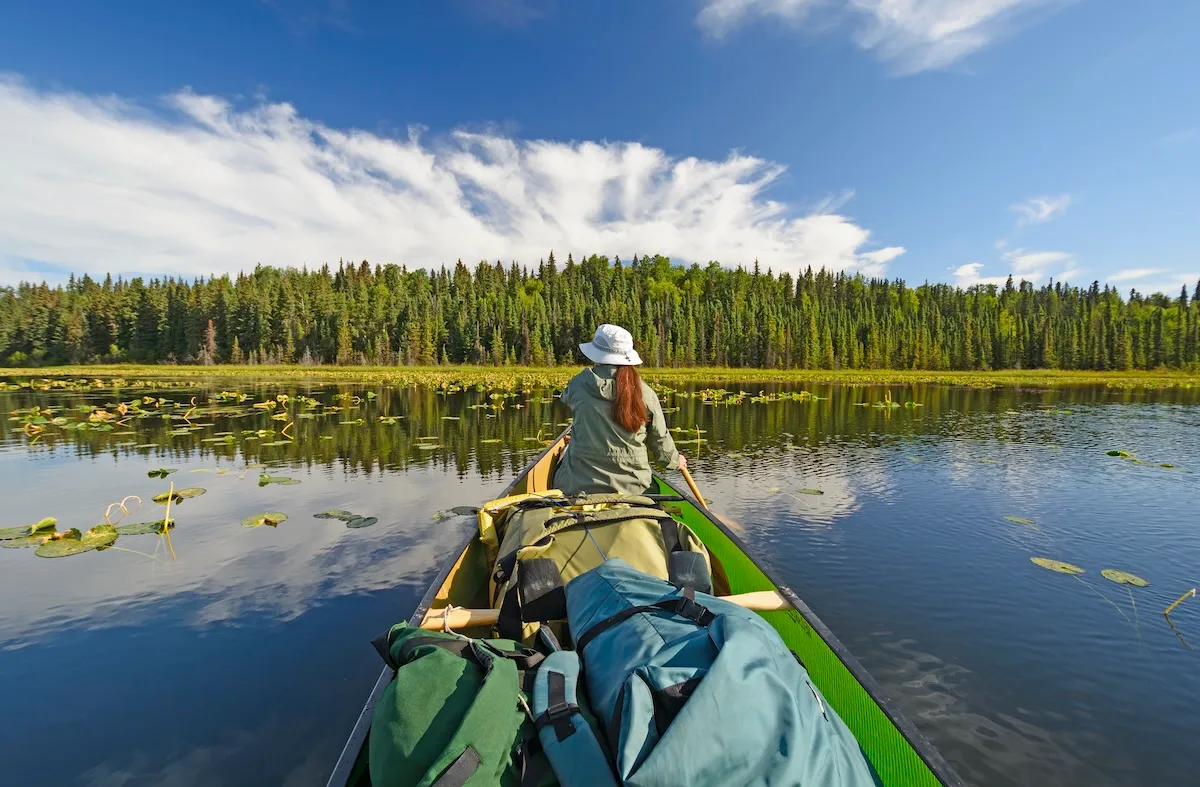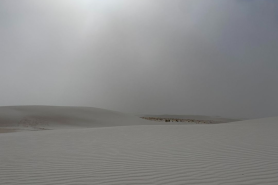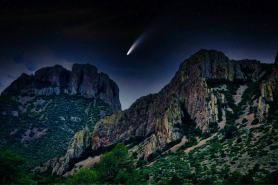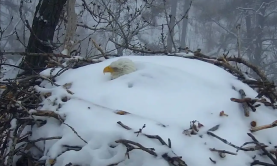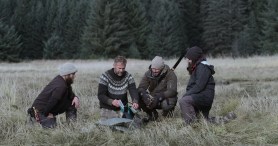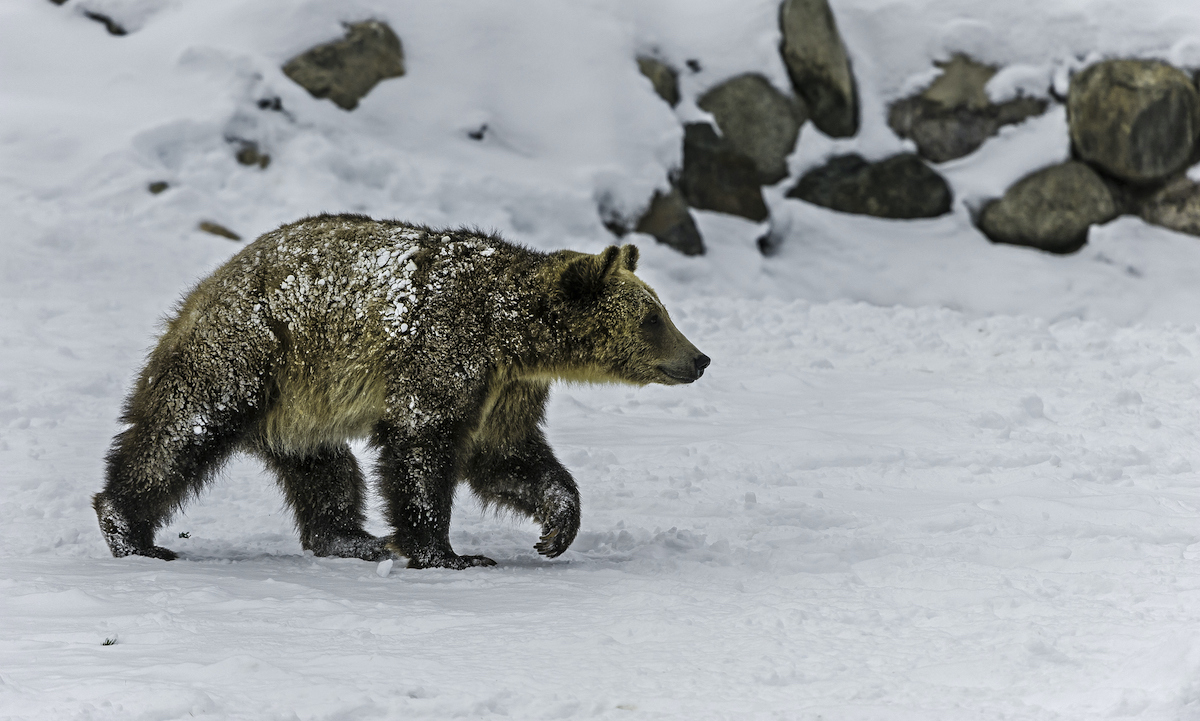

It’s that time of year again: Earlier this week, Yellowstone National Park rangers spotted their first grizzly bear of 2023. That means bears are beginning to wake up from their long winter’s nap. And you can bet they’re going to be cranky.
Videos by Outdoors
Grizzly bears generally begin hibernating late in the fall. Over the next three to five months, they remain in a deep sleep called torpor, during which they survive solely off the energy stored in their fat. By the time they wake up—usually between March and May—they’re ravenous.
Yellowstone’s first bear of the season wasn’t photographed, but the biologist who spotted it predicts that it was a male and probably weighed at least 300 pounds. The bear was found near the remains of a bison, reports the NPS. It wasn’t clear whether the bear had killed the animal or if it had passed away during the winter, though the latter is more likely.
When grizzlies first wake up in the spring, they immediately begin foraging for food, including abandoned carcasses. They’ve been known to defend these food sources aggressively, so the National Park Service is already cautioning recreationists to remain vigilant.
“Spring visitors skiing, snowshoeing or hiking in Yellowstone National Park are reminded to carry bear spray and be especially alert for bears near carcasses and areas with early spring green-up,” warned park biologist Kerry Gunther in the recent press release.
If you’re venturing into bear habitat this spring, travel in a group, store food in bear-safe containers and keep your eyes peeled. If you do see a bear, back away slowly and keep as much distance between you and the bear as possible.

